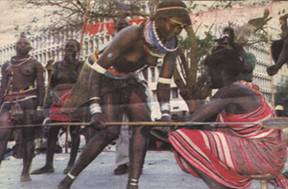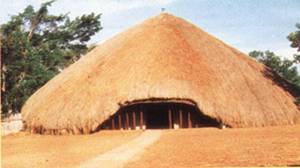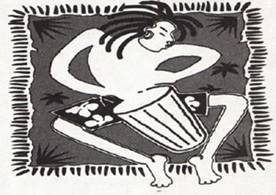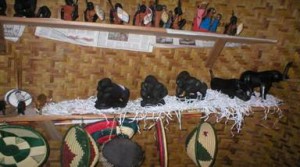12 Days Uganda Rwanda Cultural Safari
Uganda’s cultural history has made it one of the most visited by tourists. Culture here is rich and dynamic dating from 14th century when the interlucustrine kingdoms were formed. People here are very hospitable and receptive to foreigners. Cultural sites such as Kasubi Tombs , Uganda Museum and
Namugongo martyrs shrines have attracted both local and international tourists.
Uganda Cultural Tourism
Food & Tastes
Art & Crafts
Music & Dance
Kingdoms
Cultural sites
Introduction Uganda is a landlocked country situated in East Africa. This country comprises a diverse and rich heritage trail of four ethnic groups known as:
Kingdoms:
Uganda originally had five monarchies; Buganda, Bunyoro, Busoga,Tooro and Ankole, some of whose origin is not known because their early history was not written down. According to these kingdoms human history begins with a first family whose head was Kintu, but whose origin is mythical and not clear.The problems of kingdoms in Uganda started in the early 1960s. At the pre-independence negotiations in London the Buganda kingdom, the biggest and most assertive tribe in Uganda was offered the best deal. They were allowed to have an independent kingdom government and to handle their own financial resources. The privileges were that the Kabaka was above the president of Uganda too.The rest of the kingdoms and other tribes did not take it well. In 1966 the then prime Minister Dr. Milton Obote, ordered his troops to invade the Kabaka in his palace, who fled into exile in the U.K. Obote then declared himself executive president of Uganda and abrogated the five kingdoms and reduced them to a simple administrative districts.Every regime ignored reviving the kingdoms until the N.R.M liberators took power led by Mr. Museveni in1986 that there was great hope for kingdoms.
Buganda kingdom, being well organised was the first to have their coronation ceremony with the 36th king to be crowned in 1993. Tooro, Busoga and Bunyoro later followed, while Ankole kingdom is still in dispute.
Visit:
Kasubi Tombs & Wmala tombs – Buganda kings’ burial sites
Karugutu (Fort-Portal) – Tooro kings’ burial site
Nkokonjeru (Mbarara) – Ankole kings’ burial site
Nagalabi (Budo)– Buganda coronation ground
Kabaka’s Lake –
Music & Dance:
Dance and drama is one aspect that has been crucial in the lifestyles of all tribes in Uganda. There was music for every social function and aspect of life and generations. For example music for birth of a child, naming a child, for twins, marriage and death.In the past, drums were sounded to communicate to every body in that neighborhood. The style of drumming, number of beats and sound (big or thin) would have a different/special meaning from other sounds.
For –instance, today drums for church hours are still sounded in western Uganda, to inform the people that the services are due to start. Hunters’ drums and trumpet calls are another that still naturally lives today in many rural parts of the country.The hamites (cattle keepers) developed epic poetry (ebyevugo) which is linked to be modern rap, today. These people have music for grazing the cows, driving them to the well for water and when milking.In Buganda, drums have to be sounded every morning to indicate that the King is well.
Visit:
National Theatre – drama festival
Ndere troupe village
Bagalayaze Namansole
Afrigo band – Local band
Food and Tastes:
Uganda boasts of a variety of food types due to the diverse climate it is endowed with. The tropical rainfalls help to flourish the fruit and vegetable diversity, while the sunshine is necessary for good harvests and growth of those crops that need little rain. From Africa’s largest fresh Water Lake Victoria comes a many Uganda’s diet; the Nile Perch and Tilapia. This fish is served either fresh or smoked and is a delicacy for seafood lovers.Being endowed with tropical climate grows a variety of fruits and vegetables. These include oranges, mangoes, onions, passion fruits, pineapples, avocados, papaws, etc Uganda is famous for growing the sweetest pineapples. Matooke, which was formally the staple food in central and western Uganda, has become the national dish. It is peeled, wrapped and steamed in banana leaves and is normally served with beef stew or ground nuts or boiled beans.
While the northern and eastern parts of the country grow and depended on millet, cassava and sorghum. Different tribes offer different delicacies i.e. the Bagisu relish soup from young bamboo shoots, the Baganda crave for green grasshoppers and white Ants while the Bahima enjoy the gee made sauce called eshabwe.The national drink is Uganda Waragi a locally distilled gin, which is a modification of a local brew made from bananas, brown sugar and some cassava. However, there is a variety of local brew made by the different tribes of Uganda.
Visit:
Nakasero Fruit market
African Village & Ekitoobero Restaurant (African Buffet)
Munyonyo Resort, Silver springs, Jinja etc (Deep fried fish)
All bars for Uganda Waragi, Bell Beer etc
Art & Crafts:
Uganda art
Uganda tribes offer a variety of art and crafts to reflect their traditions and history. For-instance, Nyero rock paintings in Kumi have a lot to display regards the people who occupied that area, hundreds of years ago.They also offer a number of items like food utensils, stools, drums, drinking vessels and music instruments. These are made from tropical trees, soil and clay, and gourds/calabashes, which are harvested from a wild plant.Many tribes of Uganda originally are known for great earthenworks, which helped in civilization of the local institution through modifying household equipment.
Visit:
National theatre
Uganda Museum
Nomo Gallery
Religion





